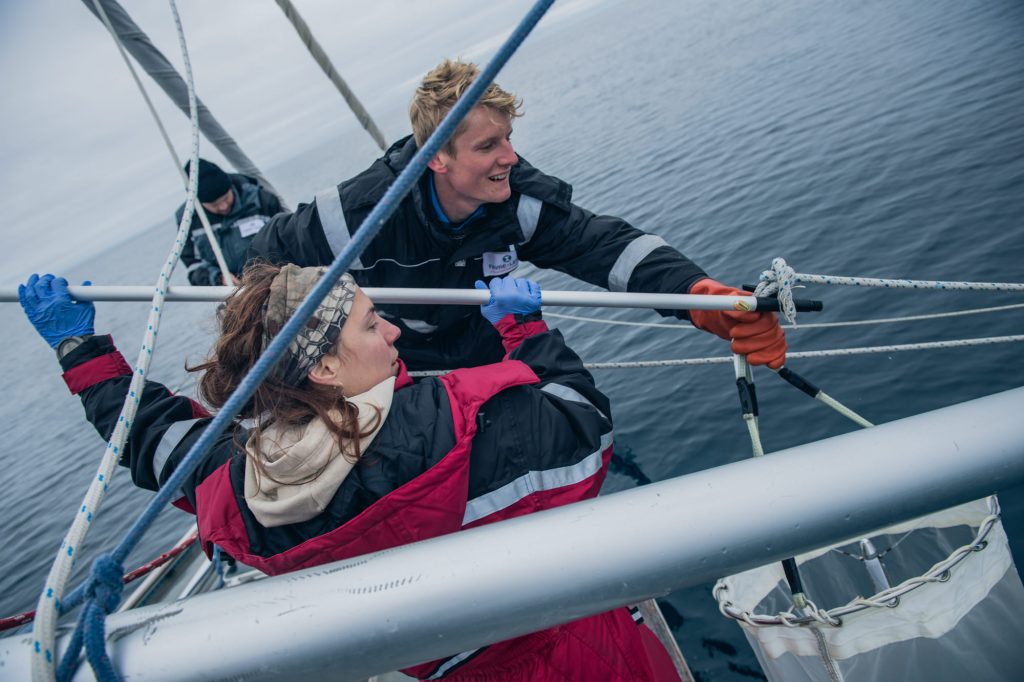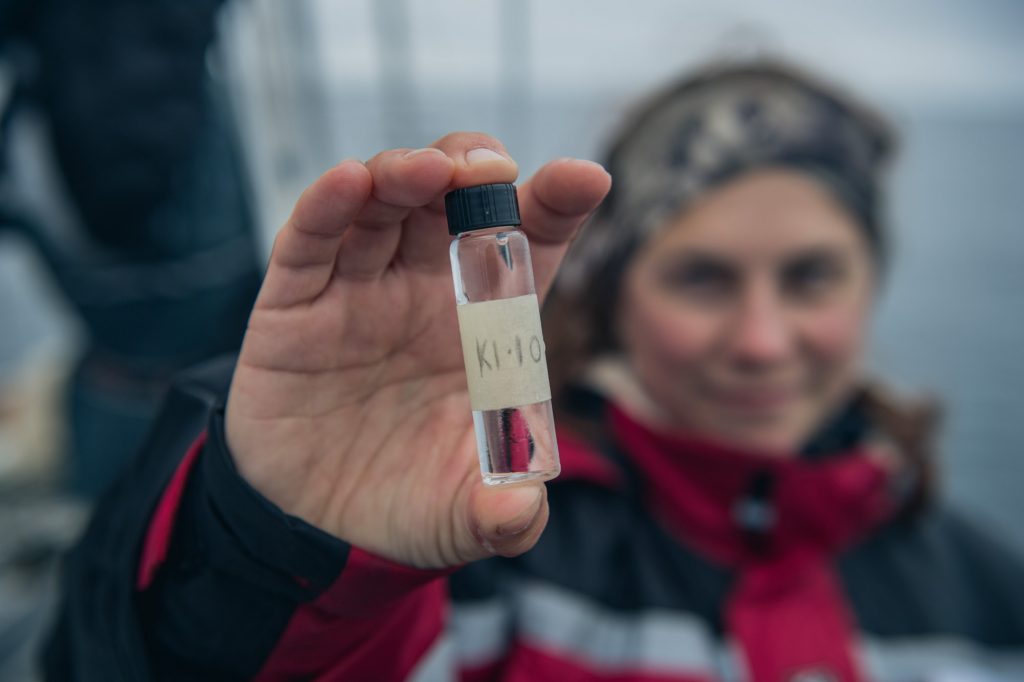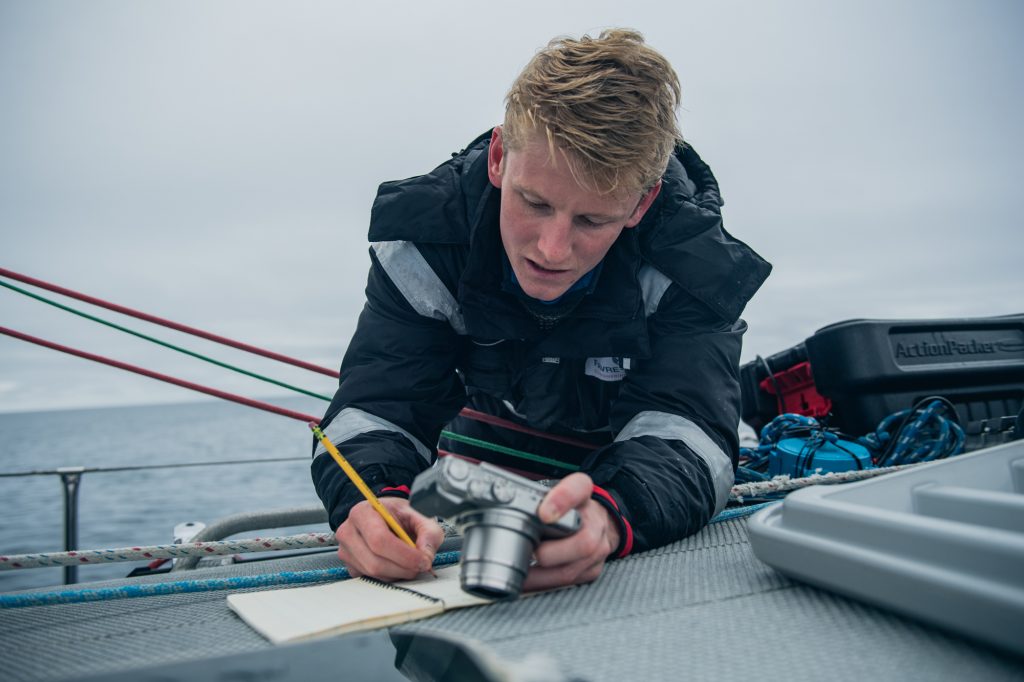Science at sea: a floating laboratory

5:30 am. The alarm goes off and wildlife biologist Heather Bauscher rubs her eyes and crawls out of bed to begin the first marine mammal and bird surveys of the day. A few minutes later, lead scientist Tim Gordon stumbles out of his cabin and puts two kettles on – fresh water for the last cup of tea of the skipper’s night watch and sea water for defrosting the ropes that have frozen solid overnight.
The Arctic summer’s midnight sun hasn’t set for months, but air and water temperatures remain below zero. Having melted, whacked or scraped the ice off equipment, the day’s first plankton samples are up next. A modified spinnaker pole serves as a trawling crane, a dinghy paddle lashed through the shrouds is an axle for spooling line; working on an ocean-going yacht demands creativity beyond the requirements of most other field sites. Knots tied through 5 pairs of gloves won’t win any prizes for style, but it’s functionality that counts here.



A laboratory that floats, heels, tips and jolts is another major challenge. Stable, flat surfaces are a luxury that Tim and Heather find themselves dreaming of whilst they carry out their chemical work. Pipetting fractions of a millilitre of highly toxic preservative into a full-to-the-brim glass vial is difficult at the best of times – when done on a pitching, rolling, ice-riddled sea, it becomes an extreme exercise of steady hands and nerve.
Storage is also tricky, with these precious samples needing to survive a month of ocean winds, waves and storms to make it back intact. Empty spaces are stuffed with bubblewrap, lids are triple-sealed, boxes are tied down, and fingers are crossed. Every gust of wind is a heart-in-mouth moment as the glassware goes tumbling again, but after a fortnight at sea the sample bottle casualty count still stands at just one. That’s two less than the kitchen mugs, but nobody’s counting…

Carrying out research in such a remote, harsh and unpredictable setting is certainly filled with challenges. But the opportunities that it provides are equally unparalleled. Navigating through the ice masses on live satellite imagery gives us access to places rarely before visited. And importantly, our work in this ecosystem is done in a uniquely non-invasive way. Gliding through naturally-opened channels between ice floes in the relative silence of a sailing boat starkly contrasts with the usual clamour of roaring engines and icebreaking hulls that large research ships bring.
It may require a bit of innovation to make it work, but our approach means that we minimise the level of disturbance on the animals that we’re studying. By slipping through the water unnoticed, we hope to uncover some of the secrets held by this unexplored wilderness. A 15 by 3 metre research station with sails might sound like a crazy idea at first, but progress is often made by taking a different tack. Research in the Arctic Ocean today is a multi-national, multi-disciplinary effort involving a range of approaches. By looking from a different angle, we hope to provide a new perspective and help to build a more complete picture of the Arctic’s future. Tie down the test tubes, we’re launching the sails.
Photographs: Conor McDonnell
Follow our progress on Facebook, Instagram and Twitter.
#Protect90North #ArcticMission
